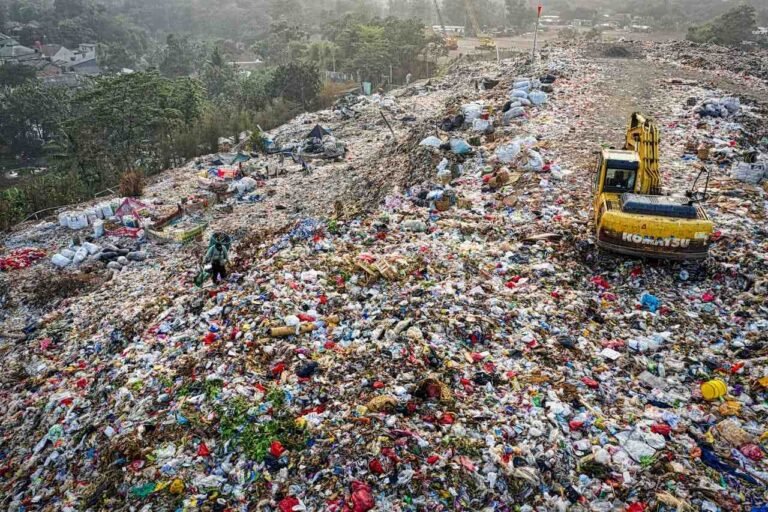Thermal Pollution: What It Is, Causes, and Environmental Effects
Imagine you’re out walking by a river near a power plant. It’s a cool morning. The breeze is fresh, and everything feels peaceful—until you notice something strange. The water just downstream from the plant is warm to the touch, almost like bathwater. Steam rises as it mixes with the cooler river, and the surface looks oddly disturbed. You wouldn’t know it by looking at it from a distance, but that river is under stress. That’s thermal pollution.
Thermal pollution might not sound like a big deal, especially compared to oil spills or plastic waste. It doesn’t leave behind trash or a colourful mess—but its damage can be just as harmful, if not worse. It’s often invisible, yet the change in water temperature, even by just a few degrees, can wipe out fish populations, disrupt breeding cycles, and throw entire ecosystems off balance.
As someone with a background in physics, I was first introduced to this through equations in thermodynamics and heat transfer. But when I stepped into the field as a researcher, seeing rivers overheating and fish dying brought a painful reality to the science. What’s happening in those waters isn’t just theory—it’s life being lost in silence.

In This Article
- What Is Thermal Pollution?
- Causes of Thermal Pollution
- Environmental Effects of Thermal Pollution
- Case Studies: True Stories
- The Science Behind the Heat
- Policy and Prevention
- What Can You Do?
- Conclusion
What Is Thermal Pollution?
Thermal pollution is what happens when the temperature of natural water bodies, like rivers, lakes, or oceans, changes significantly because of human activity. Most often, it’s about heating, not cooling. And the cause is usually something we rarely think about: the water that power plants and factories use to cool their machinery.
Here’s how it works. Power plants use water from nearby lakes or rivers to keep their equipment from overheating. Once that water has absorbed the heat, it’s dumped back into the environment—only now, it’s much warmer. This change might seem small to us, but to aquatic life, it can be deadly.
There are two main types of thermal pollution:
- Warm water discharges: This is the most common. It’s when industries release heated water into a natural body.
- Cold water releases: These occur when deep, cold water is released from dams, especially in summer, disrupting ecosystems that depend on warmer surface water.
What’s the big deal? Warmer water holds less dissolved oxygen. That means fish and other aquatic life struggle to breathe. Their metabolism speeds up, demanding more oxygen—yet there’s less of it. This often leads to large-scale die-offs and a decline in biodiversity.
A 2023 study published in Nature Climate Change found that 87% of rivers across the U.S. and Central Europe have significantly warmed over the past four decades, while 70% have experienced a drop in dissolved oxygen levels, putting aquatic ecosystems at risk. Urban rivers are warming the fastest, while agricultural ones are seeing the steepest oxygen declines.
According to the U.S. Geological Survey, a large portion of industrial water use in the U.S.—especially in thermoelectric power generation—is for cooling purposes. Much of this water is returned to rivers and lakes at higher temperatures, contributing to thermal pollution. This trend continues to grow as demand for electricity and industrial output rises.
Causes of Thermal Pollution
1. Industrial Discharges
Industries, particularly power plants, use large volumes of water from nearby sources like rivers or lakes to cool their machinery. After absorbing heat, this water is often discharged back into the environment at elevated temperatures.
Case Study: Indian Point Energy Centre
In 2011, the Indian Point Energy Centre in New York drew approximately 2.5 billion gallons of water daily from the Hudson River for cooling purposes. This water was returned to the river about 20°F warmer, significantly impacting the river’s ecosystem. The elevated temperatures disrupted aquatic life, leading to the death of over 2 million fish and more than 300 billion fish hatchlings annually.
2. Deforestation and Urbanisation
Trees and vegetation naturally regulate water temperatures by providing shade and facilitating evapotranspiration. However, deforestation and urban development replace these natural systems with impervious surfaces like asphalt and concrete. These surfaces absorb and retain heat, causing stormwater runoff to be significantly warmer when it enters water bodies.
Urban runoff can raise stream temperatures by 10°C or more during summer months. This increase can lead to thermal stress for aquatic organisms, altering their metabolism and reproductive patterns. Implementing green infrastructure, such as green roofs and permeable pavements, can help mitigate these effects by reducing surface temperatures and promoting natural water infiltration.
3. Reservoirs and Dams
Dams and reservoirs alter the natural flow and temperature of rivers. Water released from the bottom of reservoirs is often significantly colder than the natural river temperature, affecting downstream ecosystems.
Case Study: Glen Canyon Dam
The Glen Canyon Dam on the Colorado River releases cold water from the depths of Lake Powell. This has led to a decline in native fish species, such as the humpback chub, which are adapted to warmer river temperatures. The altered thermal regime has also facilitated the spread of non-native species that thrive in cooler waters, further threatening native biodiversity.
4. Agricultural Runoff
Agricultural practices, particularly irrigation, contribute to thermal pollution. Water used for irrigation absorbs heat from the sun and soil before returning to rivers and streams as runoff. This warmer water can elevate the temperature of receiving water bodies.
Studies have shown that irrigation return flows can increase the temperature of receiving waters, impacting aquatic ecosystems. For instance, research conducted by the USDA observed that water temperatures in irrigation return flows were consistently higher than the source water, with temperature increases ranging from 2°C to 5°C.
Learn More: 6 Types of Ocean Pollution
Environmental Effects of Thermal Pollution
1. Oxygen Depletion
Warm water holds less dissolved oxygen (DO) compared to cooler water. This reduction in oxygen levels can stress aquatic organisms, particularly fish, which rely on adequate oxygen for survival.
For instance, at 5°C, water can hold about 12.8 mg/L of dissolved oxygen. However, as the temperature rises to 25°C, the DO level drops to approximately 8.3 mg/L. Even a slight increase of 3-4°C can significantly reduce oxygen levels, making it challenging for aquatic life to thrive.
The U.S. Geological Survey notes that during summer and fall, when water temperatures are higher, the dissolved-oxygen concentration is often lower, affecting the health of aquatic ecosystems.
2. Disruption of Aquatic Life
Aquatic species are often highly sensitive to changes in water temperature. Sudden or sustained increases can trigger thermal shock, a condition that may prove fatal to fish and other organisms unable to adapt quickly.
A striking example occurred in 2015, when a severe heatwave caused water temperatures in Oregon’s Rogue River to spike. The result was the mass die-off of trout, driven by a deadly combination of heat stress and depleted oxygen levels.
Beyond immediate threats, warmer waters can accelerate the metabolism of aquatic life, causing organisms to consume more oxygen, just when it’s becoming scarcer. This intensifies environmental stress and can lead to long-term ecological instability.
3. Migration and Breeding Interference
Many aquatic species rely on specific temperature signals to trigger key life events such as migration and spawning. When thermal pollution alters natural water temperatures, these critical biological cues can become distorted. As a result, reproductive cycles may be delayed, disrupted, or even completely halted.
This interference can significantly reduce breeding success, ultimately threatening population stability and the long-term survival of sensitive species.
4. Invasive Species Proliferation
Warmer water conditions created by thermal pollution can favour invasive species like zebra mussels and blue-green algae, which outcompete native organisms.
Zebra mussels are well known for their ability to cause biofouling by rapidly spreading and clogging the intake pipes of power plants, municipal water systems, and various industrial operations.
Moreover, rising water temperatures can accelerate the spread of harmful algal blooms, particularly toxic cyanobacteria. These blooms may release dangerous substances into the water, threatening aquatic ecosystems and potentially endangering human health.
5. Ecosystem Imbalance
Temperature shifts in aquatic environments can disturb the natural balance between predators and prey, as many species rely on specific thermal conditions to function optimally. When water warms beyond normal ranges, predators may become more active due to increased metabolic rates, putting added pressure on prey populations.
This heightened predation can throw food webs out of balance, leading to ripple effects throughout the aquatic ecosystem. Ultimately, such disturbances may weaken the resilience and stability of the entire system, impacting biodiversity and ecological health.
Case Studies: True Stories
The Salmon Collapse in Washington State
In the early 2000s, the Columbia River Basin experienced record-high temperatures, with water temperatures exceeding 70°F (21°C). This was perilously above the 68°F (20°C) threshold that salmon can tolerate. The result was catastrophic: tens of thousands of sockeye salmon died before they could spawn, particularly between the Bonneville and McNary Dams.
For the Yakama Nation and other Indigenous communities, this wasn’t just an environmental disaster—it was a cultural and economic one. Mary George, a Yakama Nation elder, lamented, “We watched our heritage float downstream. Our children asked where the salmon were. We had no answers.”
Florida’s Manatees and Power Plant Dependency
Florida manatees, lacking thick layers of fat, are vulnerable to cold water temperatures. To survive winter, many have become dependent on the warm-water discharges from power plants. Currently, about two-thirds of Florida’s manatees rely on these artificial warm-water refuges.
However, this adaptation has its risks. When power plants shut down or reduce output, manatees face the threat of cold stress syndrome—a potentially fatal condition similar to hypothermia in humans. The Marine Mammal Commission warns that the retirement of these plants could lead to increased manatee mortality unless alternative warm-water habitats are secured.
The Science Behind the Heat
- Enzyme Activity: Enzymes in aquatic organisms function best within specific temperature ranges. For instance, in fish, digestive enzymes like lipase and amylase show optimal activity at certain temperatures, and deviations can impair digestion and nutrient absorption.
- Metabolism and Oxygen Demand: Warmer water accelerates the metabolism of aquatic animals, increasing their oxygen requirements. However, oxygen solubility in water decreases as temperature rises, leading to a mismatch between oxygen demand and availability. This imbalance can stress aquatic organisms, affecting their growth and survival.
- Toxicity of Pollutants: Elevated temperatures can enhance the toxicity of certain pollutants. For example, the toxicity of ammonia to aquatic life increases with higher temperatures, posing greater risks to fish and invertebrates. Similarly, heavy metals become more bioavailable and toxic in warmer conditions, exacerbating their harmful effects.
Policy and Prevention
Regulations and Laws
In the United States, the Clean Water Act (CWA) plays a pivotal role in controlling thermal pollution. Section 316(a) permits facilities to discharge heated water only if it doesn’t harm aquatic life. The Environmental Protection Agency (EPA) enforces Thermal Effluent Guidelines, setting temperature limits for various industries. Moreover, Environmental Impact Assessments (EIAs) are mandatory for projects, ensuring that thermal effects are considered during planning.
Real-World Implementations
- Closed-Loop Cooling Systems: Unlike once-through systems that discharge heated water back into water bodies, closed-loop systems recirculate cooling water, significantly reducing thermal pollution. For instance, in Sweden, a pulp mill adopted a closed-loop system, achieving a 60% reduction in energy use and a 48.5% decrease in operational expenses.
- Cooling Ponds: These are shallow reservoirs designed to dissipate heat from industrial effluents before they re-enter natural water bodies. Allowing water to cool naturally helps maintain the ecological balance.
- Vegetative Buffer Zones: Planting trees and vegetation along waterways provides shade, reducing solar heating of water bodies. A study in Austria highlighted that riparian shading effectively lowers summer water temperatures, benefiting aquatic life.
Learn More: Why Is Plastic Pollution Bad for the Environment?
What Can You Do?
| Action | Impact Level | Description |
| Support green energy policies | High | Renewable energy reduces reliance on thermal power plants |
| Reduce water usage | Medium | Less water demand = less thermal discharge |
| Plant trees near streams | Medium | Helps cool water bodies naturally |
| Educate others | High | Increases awareness and drives policy change |
| Participate in citizen science | Variable | Monitor local streams for temperature and ecological health |
Conclusion
Thermal pollution doesn’t make headlines. It doesn’t create dramatic oil slicks or cause fish to glow, but its effects are just as dangerous. It silently cooks ecosystems, disrupts cultures, and complicates climate change.
Yet, with awareness, policy change, and practical solutions, we can reduce its footprint.
Whether you’re a student, policymaker, or nature lover, your voice matters. Let’s bring thermal pollution out of the shadows and into the global conversation.







